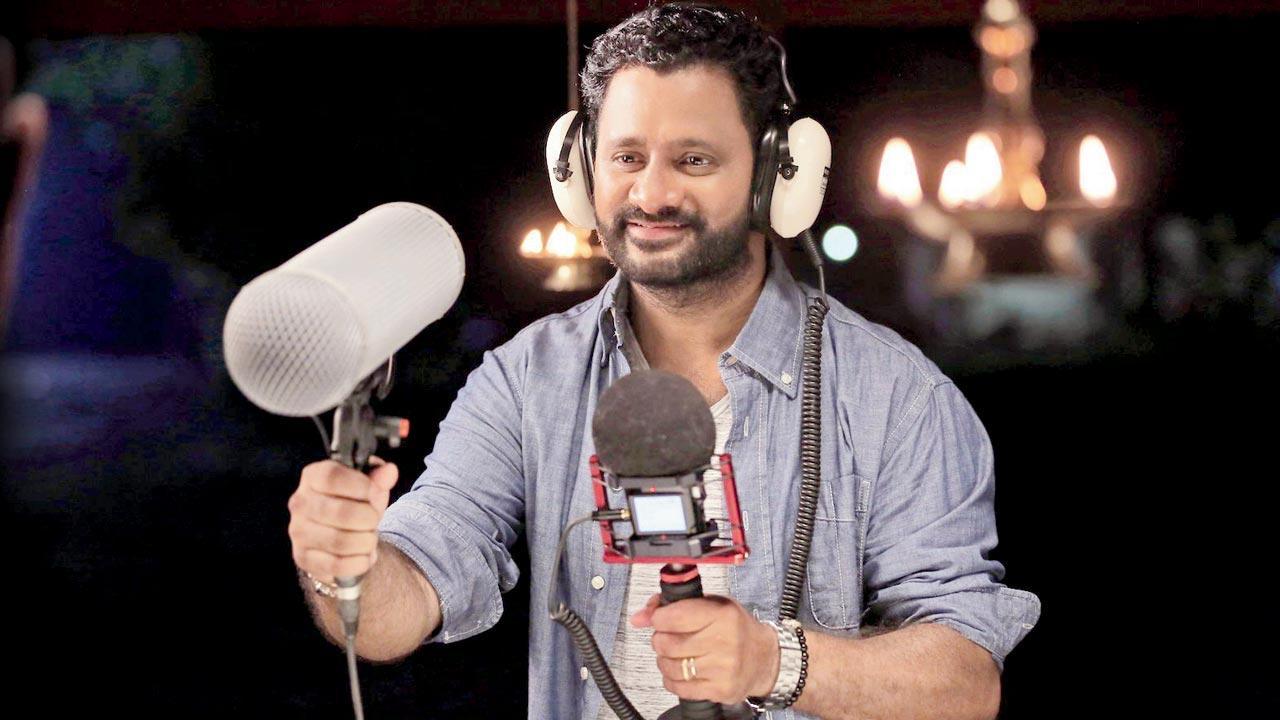For Haathi Mere Saathi, we wanted to recreate the ambiance of a forest in Dolby set up-Resul Pookutty
2:47 PM
Posted by Fenil Seta

With none of his Indian, American contemporaries having a bank of elephant recordings, Haathi Mere Saathi sound engineer Resul Pookutty on living in Kerala’s jungles to source them
Sonia Lulla (MID-DAY; March 22, 2021)
Commencing his day as early as 4.30 am to record the sounds of gibbons in Assam’s Dibrugarh forest, Oscar-winning sound engineer Resul Pookutty recalls hearing an unusual rustle. “It was the sound of something breaking. I thought someone was cutting trees nearby, but the guard said it was the noise of a herd of wild elephants, who were only 50 feet away. They are gigantic, and despite their enormous body, produce only a small squeaky sound, that doesn’t justify their frame,” says Pookutty, talking of the muse of his film, Haathi Mere Saathi, with as much adulation as one would a star.
Pookutty says he “travelled the length and breadth of Kerala” to acquire what he claims to be the finest collection of live recordings of animals — especially those of elephants — which he couldn’t even procure from his Hollywood contemporaries. “We wanted to recreate the ambience of a forest in the Dolby set-up. After watching the film, I wanted viewers to fall as much in love with elephants as I did. We needed to make the elephants act, react to situations, charge towards the camera, and even retract from it. Prabhu [Solomon, director] has done an amazing job at enabling that. When you spend time with elephants, they begin to communicate with you. I experienced that first-hand, and wanted to recreate that experience for the viewer.”
As he continued to be invested in the endeavour, Pookutty was increasingly keen on acquiring sounds that could justify their varied emotions. Working with elephants, “singles, couples, and in a herd”, he procured sounds that could justify their love, and rage. “In the film, the elephant and the characters have conversations. During the scenes in which they converse with the [protagonist], we needed the sounds to be cute. In the sequences involving an elephant’s death, I want the sound to reflect its last breath. The most important moment, as far as the sound is concerned, is the climax. We see wild elephants sit in protest with Rana [Daggubati’s character]. In a bid to express its support, we showcase an elephant wrapping his trump around Rana. Uff! I am so lucky to have got the right sound for that section. It is a hair-raising moment.”
While he is now certain that his fine understanding of the animal would enable him to even domesticate one, Pookutty admits the task wasn’t a mean feat. “Because I wanted different emotions, I reached out to friends in the forest department. At one centre, they were taming wild elephants. We were two kilometres in the forest, where, in order to train them, they had let them out of the cage. One elephant began to make certain sounds. He must have got [agitated] on seeing the new faces and stereo-microphones. Since I was wearing my headphones, I could hear two more elephants in the vicinity react to his cries, and in no time, I had three elephants standing right before me. This elephant had previously killed eight people. We refer to them as ottayans [generally, rouge elephants]. I remember running for my life,” he says ending his note with an appeal. “The pandemic has taught us that every being has his/her space. Just like we don’t want anyone breaking into our homes, if we break into someone else’s dwelling, they will also react.”
This entry was posted on October 4, 2009 at 12:14 pm, and is filed under
Assam,
Haathi Mere Saathi,
Interviews,
Rana Daggubati,
Resul Pookutty,
Resul Pookutty interview
. Follow any responses to this post through RSS. You can leave a response, or trackback from your own site.
Subscribe to:
Post Comments (Atom)
Post a Comment